Goliath Birdeater: Images of a Colossal Spider
A colossal spider

Imagine a spider as big as a child's forearm that weighs as much as a puppy. That's how huge the South American Goliath birdeater — arguably the world's largest spider — can be. Entomologist and photographer Piotr Naskrecki encountered one while he was on a nighttime stroll in the rainforest of Guyana, and at first he thought it was a small, hairy mammal. Here's a brief look at the fearsome eight-legged beast — arachnophobes beware! [Read full story on the Goliath spider encounter]
Spider in the hand
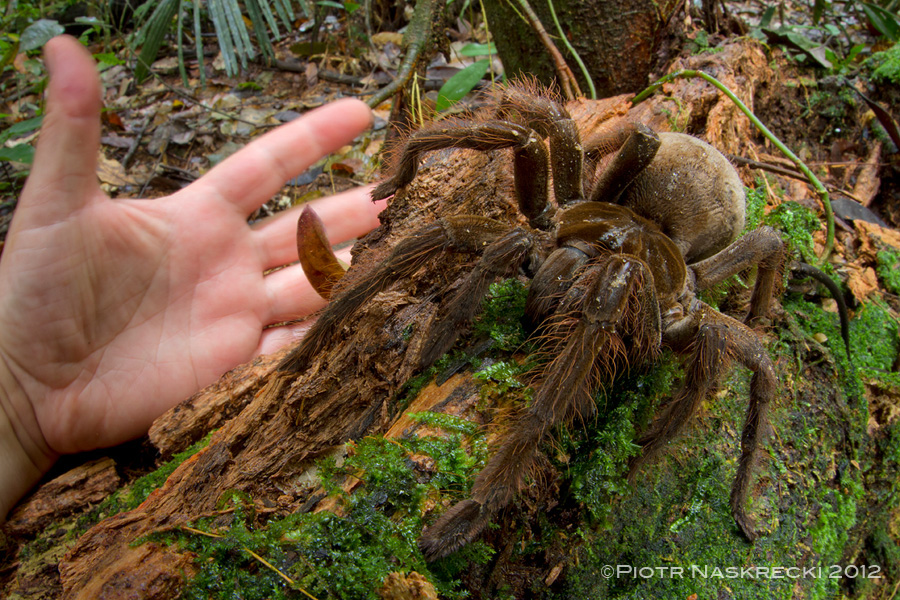
The South American Goliath birdeater (Theraphosa blondi) is the world's largest spider, according to Guinness World Records. Itslegs can reach up to one foot (30 centimeters) and it can weight up to 6 oz. (170 grams).
Defense mechanisms

The spider has three lines of defense. By rubbing its legs against its abdomen, it produces a cloud of tiny, barbed hairs that get in the eyes and mucous membranes and cause extreme pain and itching for days. It has two-inch-long fangs strong enough to pierce a mouse's skull. And it can make a hissing sound by rubbing its hairs together, which sounds like pulling Velcro apart.
"Birdeater"
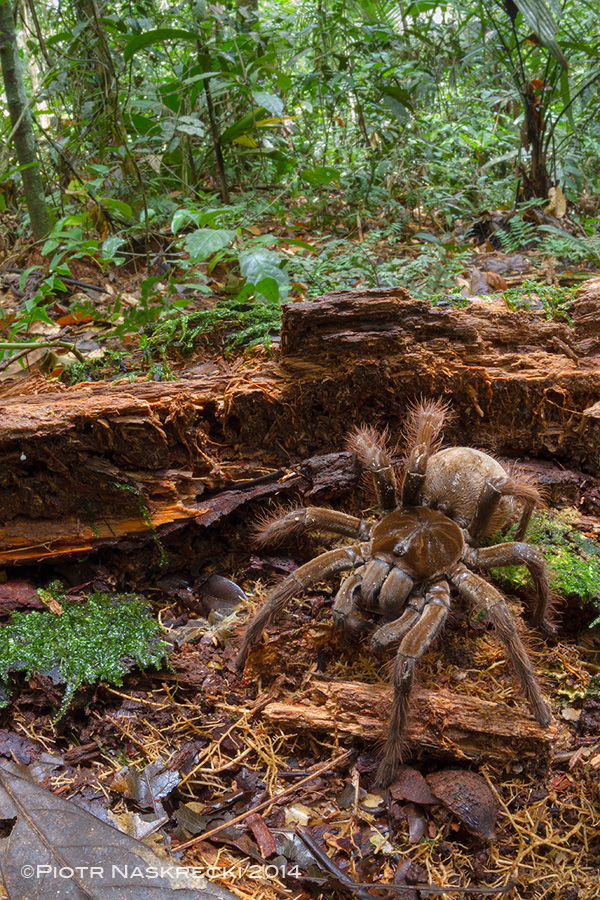
Despite its name, the Goliath birdeater doesn't usually eat birds (although it's definitely capable of doing so.) Instead, it eats whatever it can find on the ground — usually earthworms, frogs, or other small invertebrates, injecting venom into its prey with its lengthy fangs. The spider does not pose much of a threat to humans, though a bite would be "like driving a nail through your hand," Naskrecki said.
Guyana specimen

Naskrecki encountered this specimen, a female, on a trip to Guyana, and captured her to take back with him. She is now stored in a museum. Naskrecki has only seen a total of three birdeaters in his career.
Scaring off predators
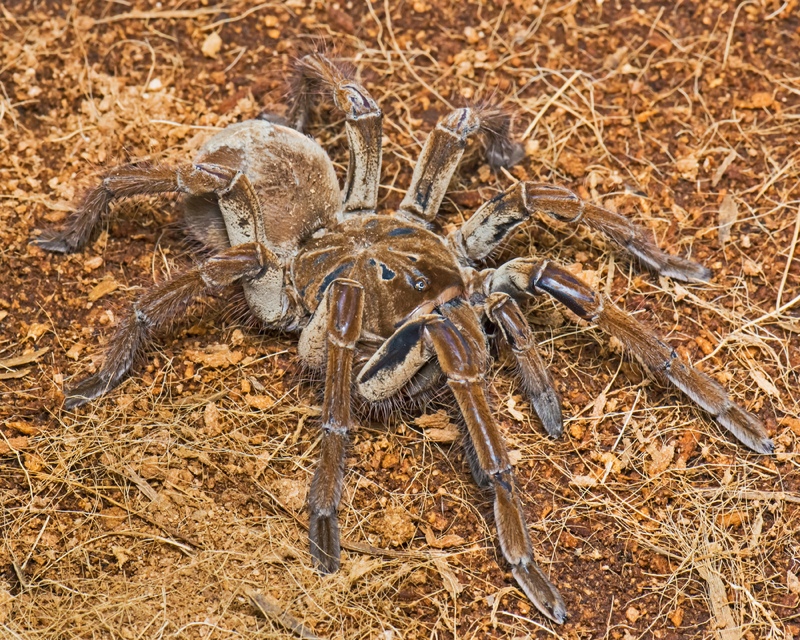
The Goliath birdeater has plenty of ways to scare off potential predators, including a behavior called stridulation in which it rubs the bristles on its first two legs and pedipalps together to create a hissing sound. The spider can also strike a spooky pose by arching the first two pairs of its legs back and "hinging back the fangs," so it's in perfect bite mode, according to the Natural History Museum. If that weren't enough, the Goliath can flick barbed hairs from its abdomen at potential enemies — the hairs can irritate the skin of such foes.
Growing up
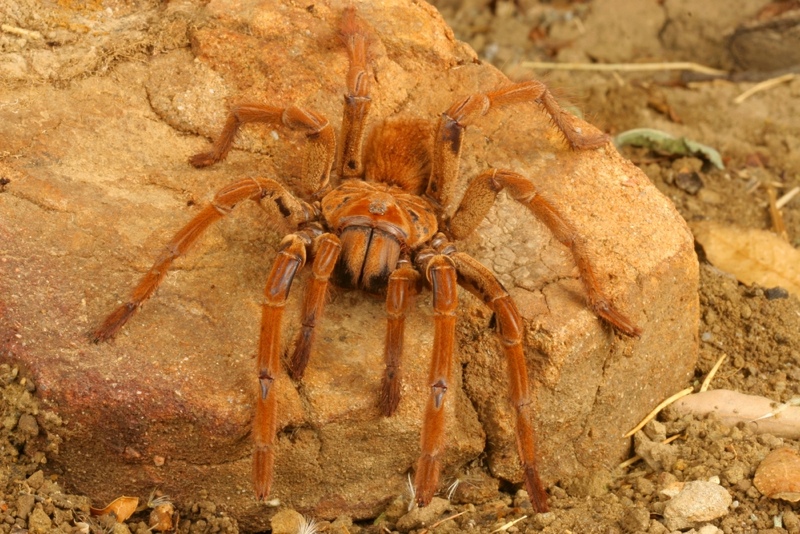
The spiders take about two to three years go mature. And being a type of tarantula, the Goliath birdeater continues to molt into adulthood; that allows the creepy-crawlies to regenerate damaged or lost limbs, according to the Natural History Museum.
Get the world’s most fascinating discoveries delivered straight to your inbox.
Up-Close

Here, a close-up look at a Goliath birdeater tarantula. The beast can grow as long as a child's forearm and weigh more than 6 oz. (170 grams), according to Naskrecki.
Huntsman Spider
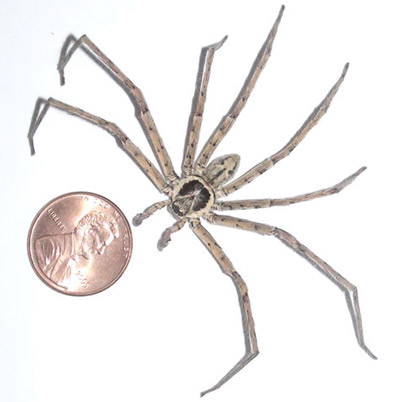
Some sources say the giant huntsman spider, due to its sprawling leg span, is bigger than the Goliath birdeater. The huntsman's legs, rather than bending vertically relative to the body, have twisted joints that allow the legs to spread out forward and laterally sort of like a crab, according to the Australian Museum.

